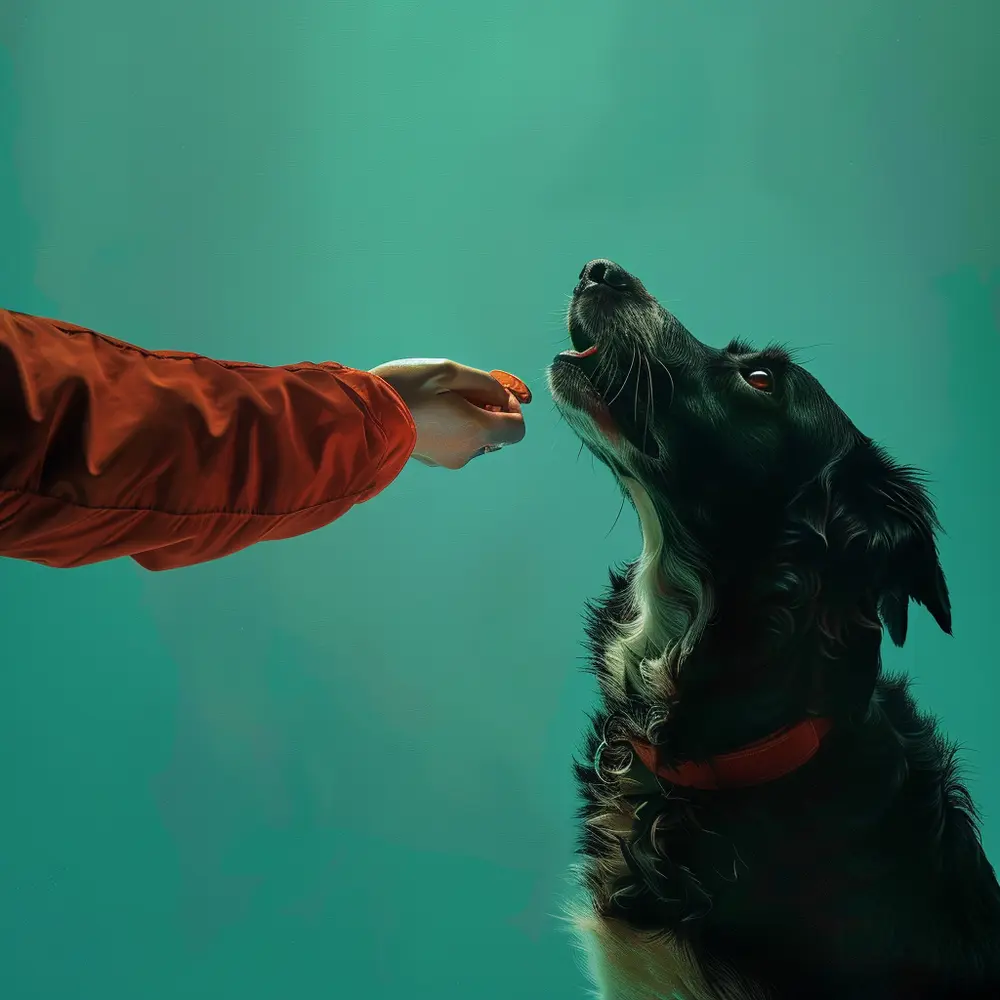Table of Contents:
Understanding the Basics of Desensitisation and Counter-Conditioning in Dog Training
Desensitisation and counter-conditioning are cornerstone techniques in canine behavioural training and therapy, aimed at helping dogs overcome negative emotional states such as fear and anxiety, associated with stimuli or situations. Desensitisation involves the gradual and controlled introduction of a dog to a stimulus that usually causes them distress. The key here is to do so at a low level, below the threshold that triggers a negative reaction. Imagine turning the volume down on a scary soundtrack until it's just a whisper in the background, no longer drawing much attention.
Counter-conditioning, on the other hand, is about changing a dog's emotional response towards the stimulus. By consistently pairing the once scary situation with positive rewards, dogs begin to learn that there’s something good waiting for them, which eventually outweighs their fear. It's akin to discovering that every time a thunderstorm rumbles, a favourite treat is on offer, gradually shifting feelings from dread to anticipation.
Combined, these methods aim to empower pet owners and professionals to gently guide their dogs from a place of trepidation to one of relaxed confidence, transforming how the dogs perceive and interact with their world. The success of desensitisation and counter-conditioning hinges upon patience, repetition, and the correct reading of a dog's comfort levels. By mastering these techniques, owners can enhance their dog’s quality of life and strengthen the bonds of trust between them.
Identifying Your Dog's Negative Emotion Triggers for Effective DSCC
The first critical step in the DSCC process is to pinpoint what exactly sparks negative emotions such as fear in your dog. These triggers can vary widely, with some dogs reacting to loud noises like fireworks, while others may feel uneasy around new people or in certain environments. By closely observing your dog, you can gather clues about what sets off their fear. Look for changes in behaviour, such as cowering, pacing, or barking, which can signal discomfort.
Once you've identified these triggers, you can begin to categorise them based on their intensity and your dog’s reactions. Documenting these fear triggers helps create a targeted approach for desensitisation and counter-conditioning. Log the situations, the level of fear displayed, and even the times of day when your dog seems most reactive. This record becomes an invaluable tool, allowing you to tailor the DSCC techniques to your dog's individual needs for more effective behaviour modification.
Remember, the goal here is not to flood your dog with the fear-inducing stimuli, but to gently introduce them to these situations or objects in a controlled manner. Understanding what your dog fears is the compass that guides the DSCC journey, ensuring you're both heading in the right direction towards positive behavioural change.
Advantages and Challenges of DSCC in Dog Behaviour Modification
| Pros of DSCC | Challenges of DSCC |
|---|---|
| Reduces Anxiety and Fear Responses | Time-Consuming Process |
| Improves Dog's Confidence | Need for Consistent Practice |
| Can Alleviate Aggressive Reactions | Potential for Unintended Reactions |
| Encourages Positive Associations | Requires Good Training Skills |
| Promotes Calm and Relaxed Behaviour | Dependence on Professional Guidance |
Setting the Stage: Establishing a Baseline for Desensitisation
With your dog’s negative emotion triggers in hand, the next essential step is to determine their 'threshold'—the point at which they begin to show signs of e.g. fear without becoming overwhelmed. Establishing this baseline is crucial for a successful desensitisation process. You can find this threshold by carefully noting the intensities of the stimulus and distances to it when they first exhibit minor signs of stress, such as ear positioning, tail tucking, or slight changes in posture.
This baseline serves as your starting line for desensitisation. It is the safe zone from which exposures will begin and gradually advance. It’s vital to avoid crossing this threshold during early training sessions to prevent reinforcing the dog's negative emotion. Instead, operate within the comfort zone and move forward incrementally. Properly gauging this baseline ensures that the process of desensitisation proceeds at a pace suited to your dog’s unique temperament and experiences.
By understanding the baseline and working within these parameters, you're setting the stage for a gradual and positive shift in your dog’s perception of their negative emotion triggers. This methodological approach paves the way for sustainable behavioural change and a more relaxed, content pet.
The Role of Gradual Exposure in Reducing Canine Negative Emotions
Gradual exposure is the linchpin of the desensitisation process. By incrementally introducing the trigger, your dog is less likely to become distressed or fearful. This measured approach allows them to stay within their comfort zone, while slowly adapting to the stimulus that previously caused unrest.
This technique requires a nuanced approach, introducing the trigger for short periods and at a reduced intensity. For instance, if your dog reacts to loud sounds, start with a low volume and increase gradually, ensuring no signs of panic or distress arise. This strategy helps to build resilience in your dog, teaching them that the presence of the trigger does not always equate to a negative experience.
It's imperative to remember that exposure should not be rushed; patience here is key. Each dog will progress at their own rate, and recognising and respecting this natural variability ensures that gradual exposure successfully contributes to diminishing canine anxiety.
Creating Positive Associations: The Heart of Counter-Conditioning
Counter-conditioning revolves around associating the negative emotion-inducing stimulus with a joyous experience for your dog. This positive association can override the former fear responses. To forge this new connection, introduce the stimulus at a level that doesn't cause a fear reaction and immediately follow with a high-value reward, such as a desired treat.
The timing here is vital; rewards must be presented in such a way that your dog connects the pleasurable reward with the presence of the trigger. If your dog, for example, feels uneasy around other dogs, a soothing tone of voice, pets, or treats provided when other dogs are at a comfortable distance can gradually transform their perception from threatening to rewarding.
Over time, with repetition and consistency, your dog should start to display signs of excitement rather than fear when encountering the trigger. This change is evidence that counter-conditioning is effectively reshaping their emotional responses, highlighting its central role in the journey towards overcoming fear.
Increasing the Challenge: Intensifying the Stimulus Without Stress
As your dog grows more comfortable with the previously feared stimulus through successful desensitisation and counter-conditioning, you can begin to carefully increase the challenge. The aim is to raise the intensity or decrease the distance of the stimulus gradually, ensuring at all times that this does not induce stress.
To achieve a stress-free increase in intensity, observe your dog’s reactions minutely. For example, if volume is the variable, you may raise it incrementally, always stopping before any sign of anxiety surfaces. If proximity to other dogs is the trigger, you might shorten the distance between them a little more each session, while continuing to provide positive reinforcements.
This delicate balance of upping the ante while maintaining your dog's comfort is crucial. It allows your dog to adapt to more challenging encounters with their triggers, building on their newfound confidence and ensuring that progress is made without causing additional anxiety.
Consistency and Patience: Key Factors in Successful DSCC
Consistency in the application of desensitisation and counter-conditioning techniques is essential. This means regular, planned sessions where your dog can expect to encounter the stimulus in a controlled environment. This predictability allows your dog to build up positive experiences, leading to a more robust and enduring change in their behaviour.
Alongside consistency, patience is a virtue when dealing with behavioural modification in dogs. Expecting immediate results can lead to disappointment; each dog will learn and adapt at their own pace. Celebrating even the smallest signs of improvement encourages both you and your dog to continue the process. Understand that there will be setbacks, but remaining committed and patient will often yield impressive long-term benefits.
By giving your dog time to adjust to each new level of exposure and maintaining a consistent schedule of positive reinforcement, you're laying the groundwork for a powerful and lasting transformation in their response to fear triggers.
Recognising and Interpreting Your Dog's Body Language
Interpreting your dog's body language is crucial for adjusting the pace of desensitisation and counter-conditioning. Being attuned to their non-verbal communication can inform you if they are comfortable or starting to feel stressed. Ears pinned back, a tucked tail, panting, or a refusal to take treats can all indicate discomfort or fear.
Learning to read these subtle cues enables you to respond swiftly, either by reducing the intensity of the stimulus or by providing support and encouragement. It's important to respect what your dog's body language is telling you; pushing them beyond their comfort level can be counterproductive.
By observing and understanding these cues, you can ensure that the DSCC process is as smooth and positive as possible. When your dog's body language shows relaxation and curiosity rather than tension, it's a clear indicator that you are on the right path. Acknowledging and acting upon your dog's communication is an integral part of the successful application of these training techniques.
When to Seek Help from a Dog Professional
There are instances when the guidance of a professional dog behaviour consultant, trainer, or behaviour vet is invaluable. If your efforts at desensitisation and counter-conditioning have hit a plateau, or if your dog's response to the fear stimulus is severe and does not improve, it may be time to call in expert help. Dog professionals bring a wealth of experience and can offer new perspectives and strategies that could be pivotal in overcoming your dog's anxieties.
Look for a trainer who uses positive reinforcement techniques and has a strong background in behaviour modification. They should be someone who understands the importance of a gradual approach and can work respectfully with your dog's individual personality and thresholds.
Engaging a professional does not mean giving up on active participation in your dog’s training. On the contrary, it can enhance your understanding and equip you with additional tools to support your dog through their journey towards fear-free living.
The Impact of DSCC on Your Dog's Well-being and Behaviour
The influence of desensitisation and counter-conditioning on a dog’s well-being and demeanour cannot be overstated. Through these techniques, dogs can experience significant reductions in stress and anxiety, leading to improvements in their overall quality of life. The transformation often manifests in more predictable and relaxed behaviour, reduced aggression, and an increased willingness to interact with their environment and others within it.
DSCC not only alleviates the immediate distress caused by specific triggers but also equips dogs with coping mechanisms that can be generalised to new environments and situations. This enhanced adaptability can foster a sense of security for the dog, allowing them to face the unknown with less trepidation and greater ease. Moreover, the positive change in your dog's behaviour can strengthen the bond you share, nurturing a deeper mutual trust and understanding.
Ultimately, the aim of employing desensitisation and counter-conditioning is to ensure a happier, more confident canine. As their fear responses diminish, you may notice an eagerness to explore and a newfound joy in activities that were once sources of fear. This positive shift is both a reward for your diligent work and a foundation for a lifetime of rewarding companionship.
Conclusion: The Transformative Power of DSCC in Dog Training
In conclusion, the techniques of desensitisation and counter-conditioning have the power to remarkably transform a dog’s experience of the world. These gentle and progressive methods not only alleviate negative behaviours associated with fear and anxiety but also pave the way for your dog to lead a more fulfilled and joyful life. It’s a process that asks for dedication and empathy but offers immeasurable rewards as your dog becomes more confident and content.
The success of DSCC lies in the understanding that change does not happen overnight. Each small step taken is a building block towards a stronger, more trusting relationship with your dog. As you apply these techniques, remember that it’s the journey—not just the destination—that will bring about the most profound change in both your life and that of your faithful companion.
FAQ on Enhancing Dog Behaviour: DSCC Strategies
What is meant by desensitisation in dog training?
Desensitisation in dog training refers to the gradual and controlled exposure of a dog to a stimulus that normally causes them distress, keeping the exposure below the threshold that elicits a negative response. The goal is to acclimate the dog to the stimulus, eventually reducing its fearful impact.
How does counter-conditioning help in modifying a dog's emotional response?
Counter-conditioning is aimed at changing a dog's emotional reaction to a fearful stimulus by pairing it with positive outcomes like treats, praise, or play. Over time, the dog learns to associate the presence of the previously feared stimulus with something enjoyable, thereby altering their emotional response from fear to anticipation or neutrality.
What are some effective ways to identify a dog's fear triggers?
To identify a dog's fear triggers, observe their behaviour and reactions to various stimuli. Look for signs of stress or fear such as barking, cowering, or pacing. Documenting these responses, the stimuli involved, and the conditions under which they occur can help pinpoint the specific triggers affecting your dog.
Why is it important to stay below the fear threshold when applying DSCC?
Staying below the fear threshold is crucial when applying DSCC to ensure the dog does not become overwhelmed or distressed. It allows the dog to remain calm and receptive to training, facilitating a gradual adjustment and a positive shift in their perception of the fear-inducing stimulus.
When should I seek assistance from a professional in DSCC?
Seek assistance from a professional if you encounter challenges in the DSCC process, if your dog's fear reactions are particularly severe, or if you do not notice any improvement despite consistent efforts. A certified behaviourist or a professional dog trainer can offer specialised insight and strategies to support your dog's progress.








